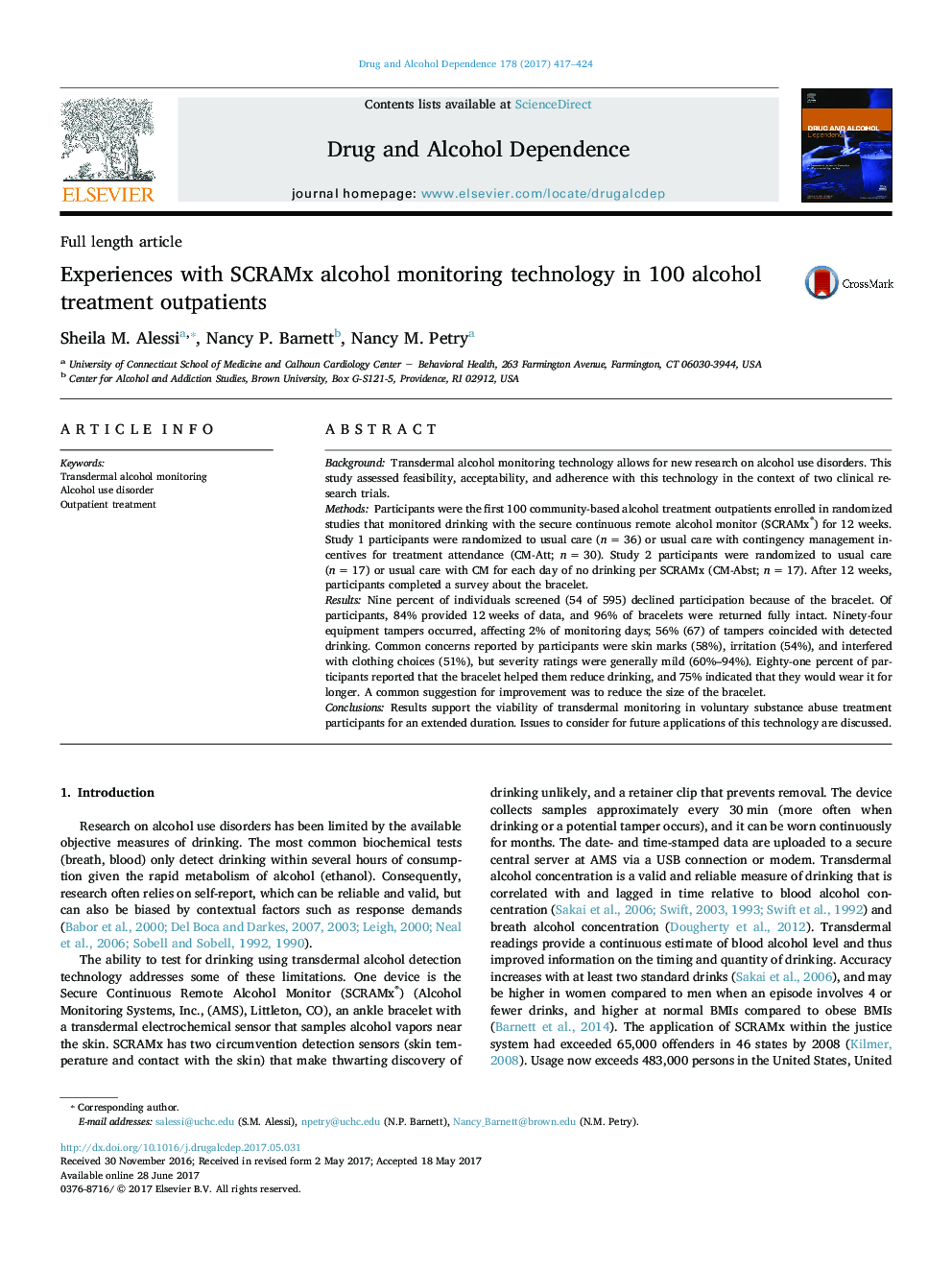| کد مقاله | کد نشریه | سال انتشار | مقاله انگلیسی | نسخه تمام متن |
|---|---|---|---|---|
| 5120370 | 1486113 | 2017 | 8 صفحه PDF | دانلود رایگان |

- Continuous alcohol monitoring technology presents new opportunities for research.
- High rates of adherence with 12Â weeks of monitoring yielded 7800Â days of data.
- Side effects and other consequences were generally minimal.
- Most participants agreed that monitoring helped them reduce drinking.
- Results support the feasibility, acceptability and adherence with monitoring.
BackgroundTransdermal alcohol monitoring technology allows for new research on alcohol use disorders. This study assessed feasibility, acceptability, and adherence with this technology in the context of two clinical research trials.MethodsParticipants were the first 100 community-based alcohol treatment outpatients enrolled in randomized studies that monitored drinking with the secure continuous remote alcohol monitor (SCRAMx®) for 12 weeks. Study 1 participants were randomized to usual care (n = 36) or usual care with contingency management incentives for treatment attendance (CM-Att; n = 30). Study 2 participants were randomized to usual care (n = 17) or usual care with CM for each day of no drinking per SCRAMx (CM-Abst; n = 17). After 12 weeks, participants completed a survey about the bracelet.ResultsNine percent of individuals screened (54 of 595) declined participation because of the bracelet. Of participants, 84% provided 12 weeks of data, and 96% of bracelets were returned fully intact. Ninety-four equipment tampers occurred, affecting 2% of monitoring days; 56% (67) of tampers coincided with detected drinking. Common concerns reported by participants were skin marks (58%), irritation (54%), and interfered with clothing choices (51%), but severity ratings were generally mild (60%-94%). Eighty-one percent of participants reported that the bracelet helped them reduce drinking, and 75% indicated that they would wear it for longer. A common suggestion for improvement was to reduce the size of the bracelet.ConclusionsResults support the viability of transdermal monitoring in voluntary substance abuse treatment participants for an extended duration. Issues to consider for future applications of this technology are discussed.
Journal: Drug and Alcohol Dependence - Volume 178, 1 September 2017, Pages 417-424